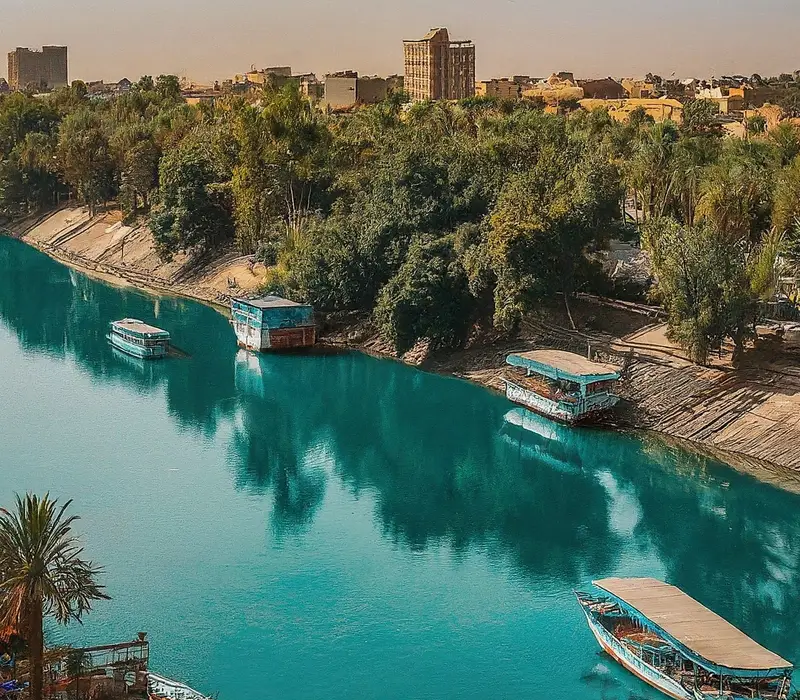The Euphrates River: A Cradle of Civilization

The Euphrates River, one of the two great rivers of Mesopotamia, has been a vital artery for civilizations in the region for millennia. Flowing through Turkey, Syria, and Iraq, the Euphrates has played a pivotal role in shaping the history, culture, and economy of these nations.
A Cradle of Civilization The fertile crescent formed by the Tigris and Euphrates rivers provided the ideal conditions for agriculture, giving rise to complex societies and urban centers. Ancient Sumerian, Akkadian, Babylonian, and Assyrian civilizations flourished along its banks. These ancient peoples harnessed the river's waters for irrigation, transportation, and trade. The river's fertile floodplains were the birthplace of writing, mathematics, and astronomy.
Economic Importance Today, the Euphrates River continues to be a vital economic resource for the region. It supports a significant portion of the agriculture in Iraq and Syria, providing water for irrigation. Additionally, the river is a major transportation route, connecting various cities and facilitating the movement of goods. Hydroelectric power plants along the river contribute to the nation's energy needs.
Environmental Challenges Despite its immense importance, the Euphrates River faces numerous environmental challenges. Declining water levels due to climate change, upstream dam construction, and increased water demand for agriculture and industrial purposes have put immense pressure on the river's ecosystem. Pollution from industrial activities and untreated sewage has also contaminated the water, posing serious health risks to local populations.
Political Disputes The Euphrates River has been a source of tension and conflict among the countries it flows through. Disputes over water rights have led to political instability and hindered cooperation on regional water management.
Conservation Efforts Recognizing the critical importance of the Euphrates River, both regional governments and international organizations have initiated various conservation efforts. These include water management projects, reforestation programs, and pollution control measures. However, more needs to be done to ensure the long-term sustainability of this vital water resource.